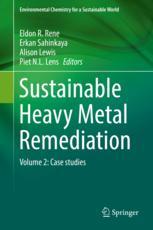

Most ebook files are in PDF format, so you can easily read them using various software such as Foxit Reader or directly on the Google Chrome browser.
Some ebook files are released by publishers in other formats such as .awz, .mobi, .epub, .fb2, etc. You may need to install specific software to read these formats on mobile/PC, such as Calibre.
Please read the tutorial at this link: https://ebookbell.com/faq
We offer FREE conversion to the popular formats you request; however, this may take some time. Therefore, right after payment, please email us, and we will try to provide the service as quickly as possible.
For some exceptional file formats or broken links (if any), please refrain from opening any disputes. Instead, email us first, and we will try to assist within a maximum of 6 hours.
EbookBell Team

4.1
70 reviewsThis book presents an assortment of case-studies pertaining to the use of sustainable technologies for heavy metal removal and recovery from mining and metallurgical wastes, construction and demolition wastes, spent catalysts and electronic wastes.
Wastewaters from diverse industrial and mining activities have caused pollution problems, but these sectors also serve as a hotspot for metal recovery. Several metal removal technologies based on physical, chemical and biological processes have been successfully implemented in full-scale operation, while metal recovery, which is beneficial for economic and environmental reasons, is still limited due to challenges arising from downstream processing. For instance, microbial recovery (bioleaching) of metals from their ores is an established technology with a number of full-scale applications. Bioleaching of electronic wastes to recover metals is also a highly promising technology with low environmental impact and high cost-effectiveness; yet, this technology is still at its infancy.
As the individual chapters of this book focuses on the applications and limitations of different technologies, this book will serve as an excellent resource for chemical engineers, environmental engineers, mining engineers, biotechnologists, graduate students and researchers in these areas.